What Oil is the Healthiest for Indians to Cook With?
I can’t even count how many times I’ve told my mom to stop cooking with refined vegetable oils. After repeating myself hundreds of times, she finally switched to using coconut oil and ghee for most of her cooking. She still uses vegetable oils for frying, but since that’s not an everyday thing, I’ve learned to let it go.
I’ve met countless Indian friends who struggle with the same issue. They can’t get their Indian parents to stop using refined vegetable oils. After all, it’s SO much cheaper, and Indians LOVE to save money. You can get a half gallon of canola oil for $5, whereas a high quality olive oil will cost $50-70 for half a gallon. Go figure!
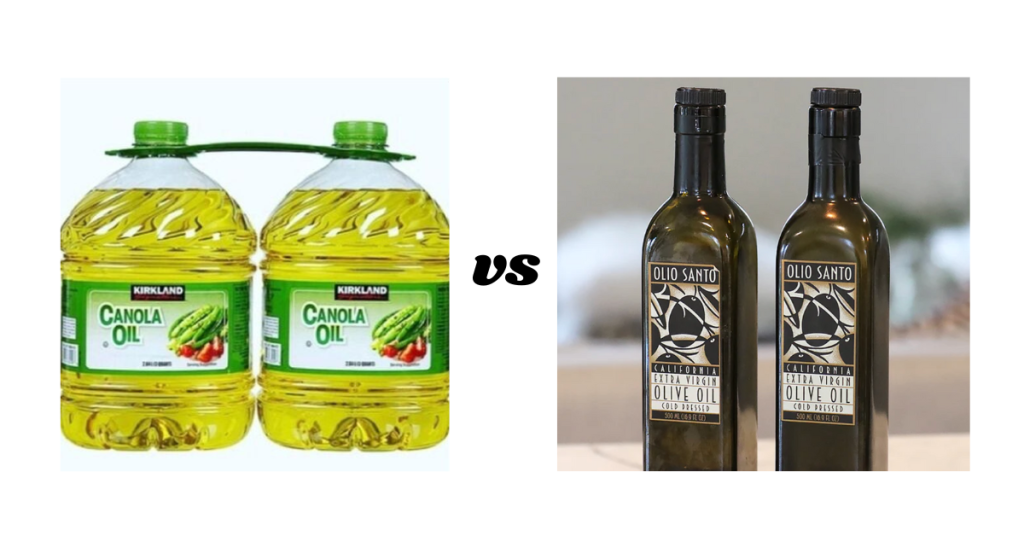
Most Indian parents are dumbfounded when someone mentions that refined vegetable oils are not healthy to cook with. What’s wrong with them? They’re cheap, look and feel like oil, and have a neutral taste which makes them great for curries.
But let me tell you the truth: these oils are slowly destroying our health.
In this post, we’ll discuss the best and worst types of oils for Indians to cook with. We’ll consider various factors, such as the oil’s smoke point, how the oil was extracted, and what type of cooking method you’re using the oil for. By the end, you’ll be able to make an informed choice about which oil to use for various Indian dishes.
So let’s dive right in!
Why Cooking Oils Matter
One of the biggest reasons for the rise in poor metabolic health in India is the type of fats used in Indian cuisine. Recent research shows that obesity is increasing globally due to a decline in our metabolisms. In other words, we’re gaining weight while consuming fewer calories because of a reduction in our basal metabolic rate (BMR). One of the culprits for this decrease in metabolism is the type of dietary fat used in modern-day cooking. This is true not only in India but worldwide. Everywhere you look, there are banners promoting canola and safflower oil as heart-healthy. As a result, there has been a surge in the consumption of polyunsaturated fats (PUFAs) in India, which are known to slow down metabolism.
In nature, animals consume PUFAs when they’re going into hibernation and need to store excess body fat to keep them warm and alive through the winter. But in modern times, people are consuming way more PUFAs than they need, leading to inflammation, reduced metabolism, and many other health issues.
This is why it is critical to consume the right types of fats. To understand what those are, we’ll first start by looking at the different types of fats available to us.
A Brief Overview of Different Types of Fats
Let’s first take a moment to understand the different types of fats before we dive into the best and worst oils for cooking.
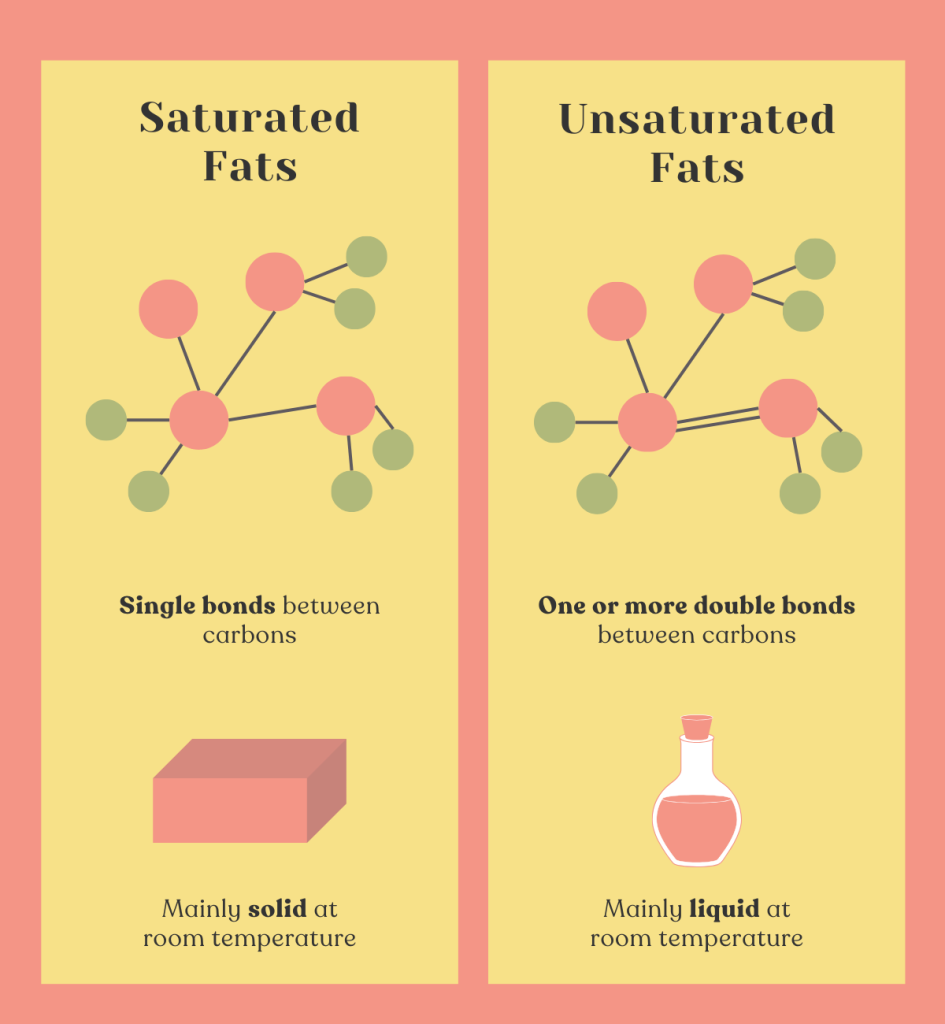
Saturated Fats
Saturated fats are solid at room temperature and are found in animal-based products like meat, butter, cheese, and full-fat dairy, as well as some plant-based foods like coconut oil and palm oil.
For years, people believed that saturated fats caused heart disease. However, recent studies have shown no such correlation and that some can actually be beneficial for our health.
For instance, the American Journal of Clinical Nutrition published a study that found no significant evidence linking saturated fat consumption to an increased risk of cardiovascular disease. Moreover, saturated fat contains many critical nutrients that support brain health.
If you still believe saturated fat is bad, it’s time to unlearn that. Don’t be afraid of saturated fat and recognize that you may even need more of it to be healthy.
Unsaturated Fats
Let’s talk about two types of unsaturated fats: monounsaturated fats (MUFAs) and polyunsaturated fats (PUFAs). These fats are liquid at room temperature and you can find them in foods like nuts, seeds, avocados, olives, fatty fish like salmon, and vegetable oils such as olive oil.
MUFAs
MUFAs are associated with reducing the risk of heart disease and stroke, and they help lower LDL cholesterol levels (the “bad” kind) while maintaining HDL cholesterol levels (the “good” kind). Research shows that MUFAs have a positive impact on heart health and can be found in foods like avocado, nuts, and olive oil. Check out this study and article to learn more.
PUFAs
PUFAs consist of omega-3 fatty acids and omega-6 fatty acids. Our bodies cannot produce these fatty acids, so we must obtain them from our diets.
We can find omega-3s in oily fish like salmon and mackerel, as well as in nuts like walnuts and flaxseed. These fatty acids are known to benefit our health, brain function, weight management, and help fight inflammation.
On the other hand, omega-6s are present in vegetable oils such as soybean oil and corn oil, as well as in nuts like walnuts and almonds.
It is important to maintain a good balance of omega-3s and omega-6s in our diet. Overconsumption of omega-6 fatty acids can lead to inflammation, which is the root cause of many diseases. Unfortunately, most cooking oils today are made from PUFAs that are high in omega-6, leading to an imbalance of omega-3 vs omega-6 fatty acids and causing inflammation and many other health issues.
Trans Fats
Trans fats are unsaturated fats that food manufacturers used to make by adding hydrogen to liquid vegetable oils. This process turned them into solid margarine or shortening, which was cheap and had a longer shelf life. However, trans fats are deadly as they increase LDL cholesterol levels and decrease HDL cholesterol levels, leading to an increased risk of heart disease.
The FDA has banned the use of trans fats in food products due to the negative health effects associated with them.
What is Smoke Point and Why Does it Matter?
One of the most important things to consider with cooking oils is its smoke point. The smoke point is the temperature at which an oil begins to break down and produce visible smoke. When this happens, the oil starts to release toxic and harmful compounds which are detrimental to our health.
Once an oil reaches its smoke point, it becomes unstable and starts to oxidize, which then forms free radicals. These free radicals cause havoc in the body–potentially leading to damaged brain cells, liver damage, diabetes, heart disease, and cancer.
That’s why you need to consider the smoke point of an oil before cooking. Each oil has its own smoke point, and some are better for high-heat cooking methods like frying or sautéing, while others are better for low-heat cooking methods like baking or salad dressings. Below is a list of common cooking oils and their respective smoke points.
Cooking oil smoke points
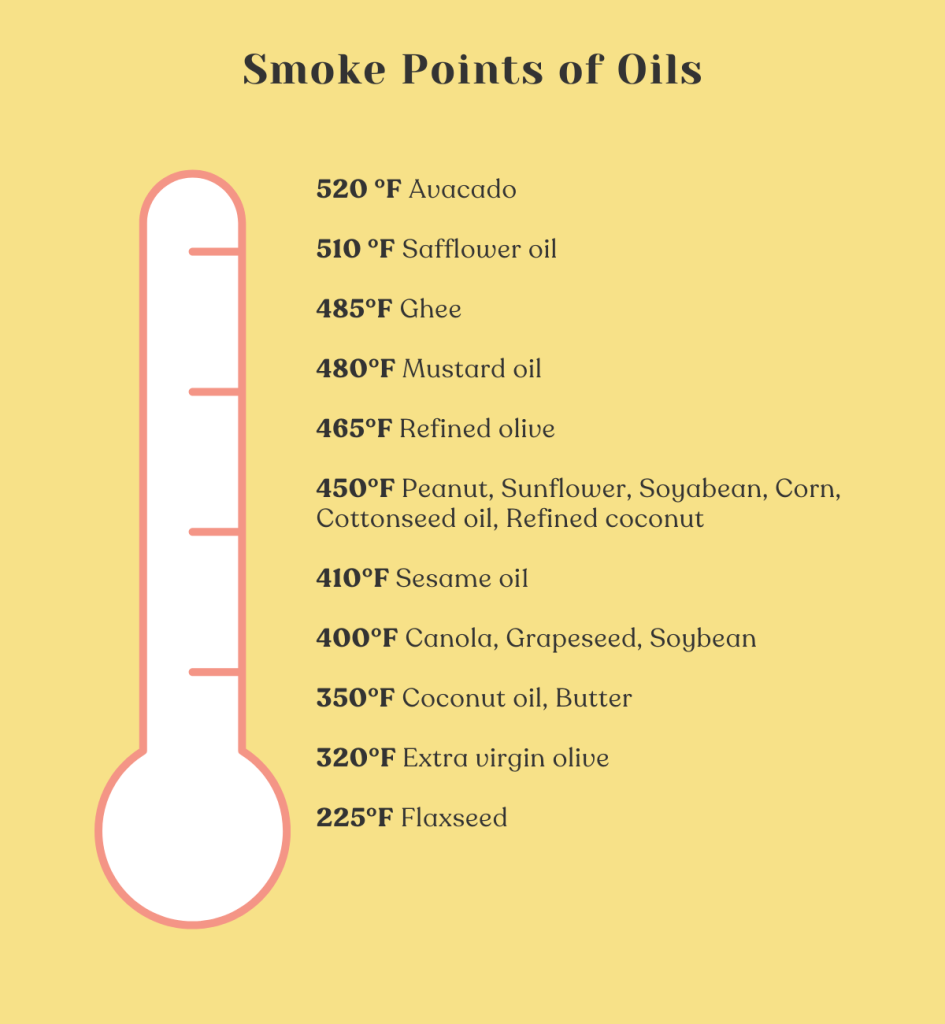
- Olive oil: Extra virgin olive oil has a relatively low smoke point (around 320°F). Refined olive oil has a higher smoke point (around 465°F), but as we’ll see in the next section, we do not want to be consuming refined oils.
- Coconut oil: Unrefined coconut oil has a low smoke point of around 350°F, while refined coconut oil has a higher smoke point of around 450°F.
- Ghee: Ghee has a high smoke point of around 485°F.
- Butter: Butter has a low smoke point of 485°F.
- Avocado oil: Avocado has a very high smoke point around 520°F.
- Peanut oil: Peanut oil has a high smoke point of around 450°F.
- Mustard oil: Mustard oil has a high smoke point of around 480°F.
- Sesame oil: Sesame oil has a moderate smoke point of around 410°F.
- Canola oil: Canola oil has a moderately high smoke point of around 400°F.
- Sunflower oil: Sunflower oil has a high smoke point of around 450°F.
- Corn oil: Corn oil has a high smoke point of around 450°F.
- Cottonseed oil: Cottonseed oil has a high smoke point of around 450°F.
- Safflower oil: Safflower oil has a high smoke point of around 510°F.
- Soyabean oil: Soyabean oil high smoke point of around 450°F.
When you first look at it, vegetable oils like canola, corn, and cottonseed seem great because they have a high smoke point. But there’s a catch: these oils are highly refined and oxidize quickly when exposed to high heat. In the next section, we’ll explore why this happens.
What is the Difference Between Unrefined vs. Refined oils?
Let’s face it: Refined oils have become a staple in Indian kitchens because they’re cheap and easily available. But what exactly do we mean by “refined”? It means that high heat is used to extract the oil from seeds and vegetables. Then the oil is “purified” using chemicals and bleach. Unfortunately, this process strips the oil of its nutrients and flavor.
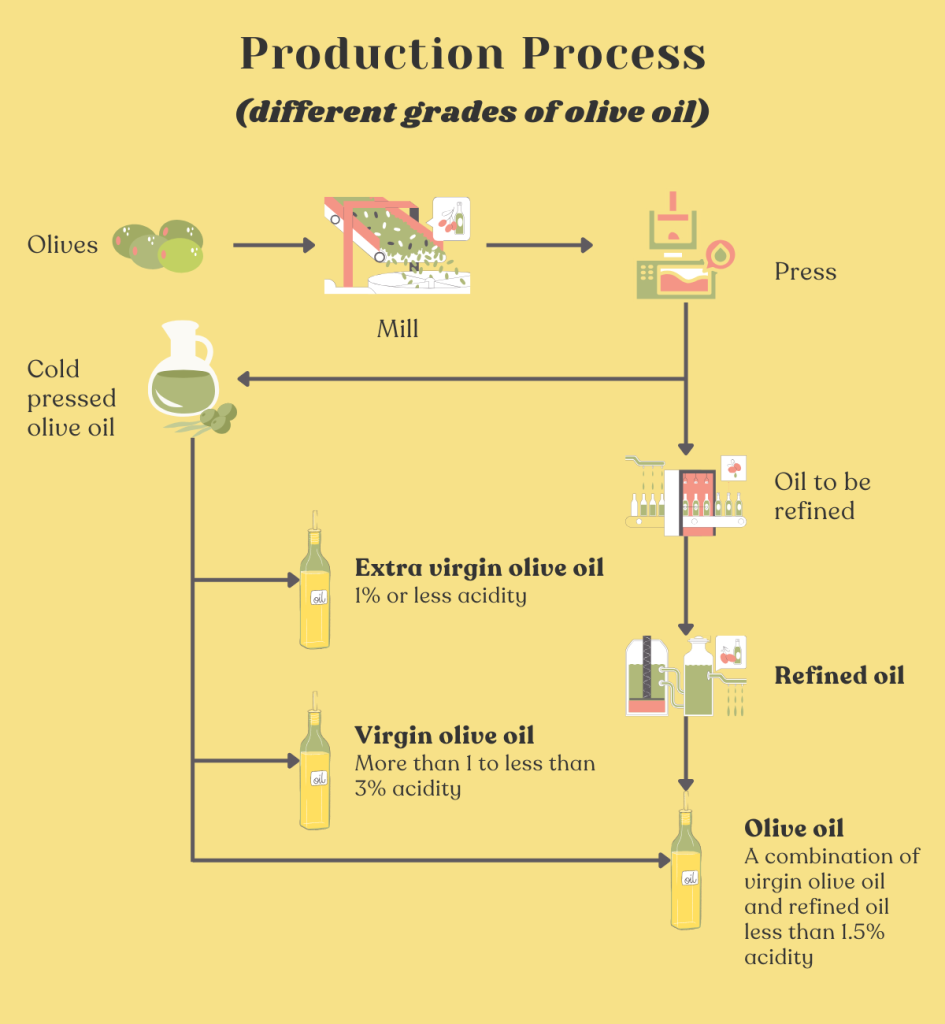
To make matters worse, refined oils quickly oxidize when exposed to high heat. As we discussed earlier, repeated exposure to free radicals from oxidized oils can lead to a host of scary health issues.
On the other hand, “unrefined oils” are minimally processed and retain their color, flavor, and nutrients. They’re extracted using traditional methods such as cold-pressing or expeller-pressing.
Cold-pressed oils extract oil from nuts, seeds, or fruits without heat or chemicals.
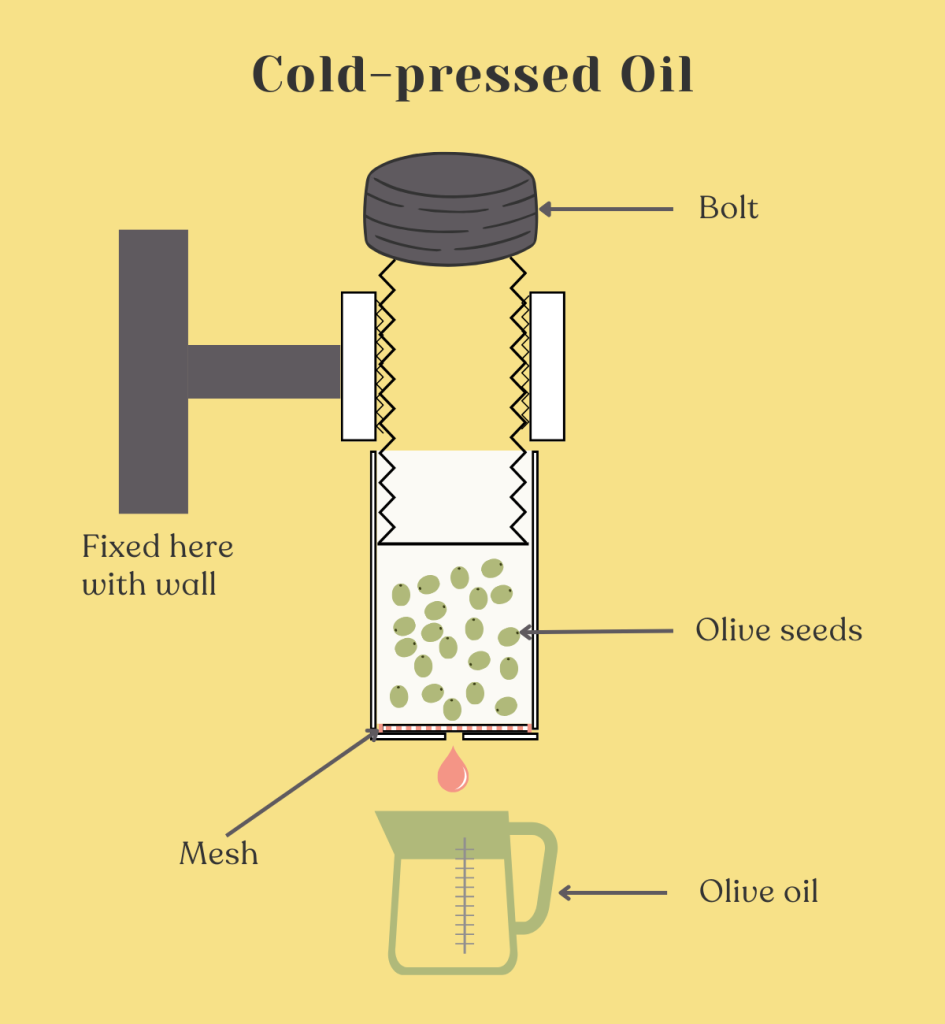
However, they are labor-intensive and more expensive than refined oils. For example, refined olive oil costs $0.40 per ounce, while a higher quality unrefined and cold-pressed oil will cost $0.90 per ounce, more than double the price. This is why many Indians choose refined oils, even though they come with many health risks associated with oxidation and chemical processing.
It’s important to remember that nothing good comes without a price. Refined oils may be cheap, but they come with health risks. Unrefined oils (e.g., cold-pressed oils) maintain their nutrients and flavor while minimizing your exposure to toxic compounds.
In summary, the quality of an oil depends on factors such as smoke point, extraction method, and nutritional content.
Best Oils to Use for Indian Cooking
Now that we know what factors to consider when evaluating cooking oils, let’s take a look at our top choices.
Ghee
For centuries, Indians have used ghee, a type of clarified butter, in their cooking. Ghee has a high smoke point, making it perfect for frying and sautéing. Plus, it’s packed with vitamins A, D, E, and K, as well as butyric acid, which aids digestion.
Coconut oil
Coconut oil is another great option. It has a slightly sweet taste and aroma that pairs well with many Indian spices. Plus, it contains medium-chain triglycerides (MCTs) which can boost your metabolism and help with weight loss. Coconut oil is also high in lauric acid, which has antimicrobial properties. Just keep in mind that it’s not suitable for frying due to its relatively low smoke point. However, it’s perfect for slow-cooking curries.
Olive oil
Olive oil is a staple ingredient in Mediterranean cuisine, but who says it cannot be used in Indian cooking? It’s high in monounsaturated fats and antioxidants, which can help reduce inflammation. For the healthiest option, go for extra-virgin olive oil, which is the least processed form. However, keep in mind that olive oil has a low smoke point, so it’s not suitable for frying or cooking curries on high heat. Instead, it’s best used for salads, dressings, and dips, or when cooking low and slow.
Avocado oil
Avocado oil has gained popularity in recent years. It’s rich in monounsaturated fats (MUFAs) and antioxidants like vitamin E. Unlike olive oil, it has a high smoke point of around 520°F, making it ideal for high-heat cooking. Unfortunately, it’s not readily available in India. But if you can get your hands on it, it’s definitely a great oil to use for high-heat cooking.
Mustard oil
In North Indian cuisine, mustard oil is a go-to ingredient for its distinctive pungent flavor. Mustard oil has antioxidants and anti-inflammatory compounds, making it a healthy choice. Plus, it’s high in monounsaturated and polyunsaturated fats. However, as we mentioned earlier, it’s important not to go overboard with PUFAs. So, instead of making it a staple, use mustard oil occasionally to reap its benefits.
Sesame oil
Sesame oil has a nutty flavor that complements many Indian dishes. It’s rich in antioxidants and polyunsaturated fats, and contains sesamol and sesaminol, two compounds known for their anti-inflammatory properties. However, it’s important to consume it in moderation due to its high PUFA content. And be sure to steer clear of refined sesame oil, as it can go rancid quickly.
Peanut oil (ie. groundnut oil)
If you’re looking for an oil to fry with, consider peanut oil. It has a neutral flavor and can handle high temperatures without smoking, making it perfect for frying and deep-frying. Plus, it’s packed with healthy monounsaturated and polyunsaturated fats. However, it’s important to note that peanut oil is high in omega-6 fatty acids, so it’s best to use it sparingly for frying and not as your go-to cooking oil.
To sum up, stick with ghee, coconut oil, olive oil, and avocado oil. Use mustard oil, sesame oil, and peanut oil occasionally as needed.
Now that you know which oils to use, let’s quickly cover the ones you should avoid at all costs: Canola oil, Sunflower oil, Safflower oil, Soya bean oil, Corn oil. These oils are almost always of poor quality and highly refined. It’s very unlikely that you’ll find cold-pressed versions of these oils in India. They contain high levels of PUFAs and will go rancid quickly if they are refined. So, avoid them like the plague!
Can You Reuse Cooking Oil After Deep Frying?
As an Indian, I know we love to reuse cooking oils to save money. But did you know that this can be very dangerous? When we heat oil, it oxidizes and produces free radicals. Reusing oil multiple times increases the number of free radicals and makes the oil more toxic.
Moreover, when we reuse cooking oil for deep frying, food particles from the previous use remain in the oil and break down further with each subsequent use. This leads to increased production of acrylamide, a carcinogenic compound that forms when starchy foods are cooked at high temperatures.
In addition to acrylamide, reused oils also produce other harmful compounds such as polar compounds and trans fats.
Polar compounds form when oil breaks down due to heat exposure and starts reacting with oxygen in the air. These compounds have been linked to various health problems including heart disease and cancer.
Trans fats form when unsaturated fats are exposed to high heat during deep frying. We all know by now that trans fats are deadly and should be avoided as much as possible.
In summary, reusing cooking oils is a bad idea and can cause serious health problems. Avoid reusing oils and opt for fresh oil for each use instead. It may cost more in the short-term, but it will save you and your family hospital bills in the long-term.
Conclusion
I hope this post helps you choose the healthiest cooking oils for making Indian foods. Next time you are cooking paneer, dal or any Indian dish, remember to consider the smoke point, extraction method, and nutritional content when selecting your oil. By doing so, you can ensure that you’re using the best oil for your dish while prioritizing your health and wellness.
If you have any questions or comments, please share them below!






